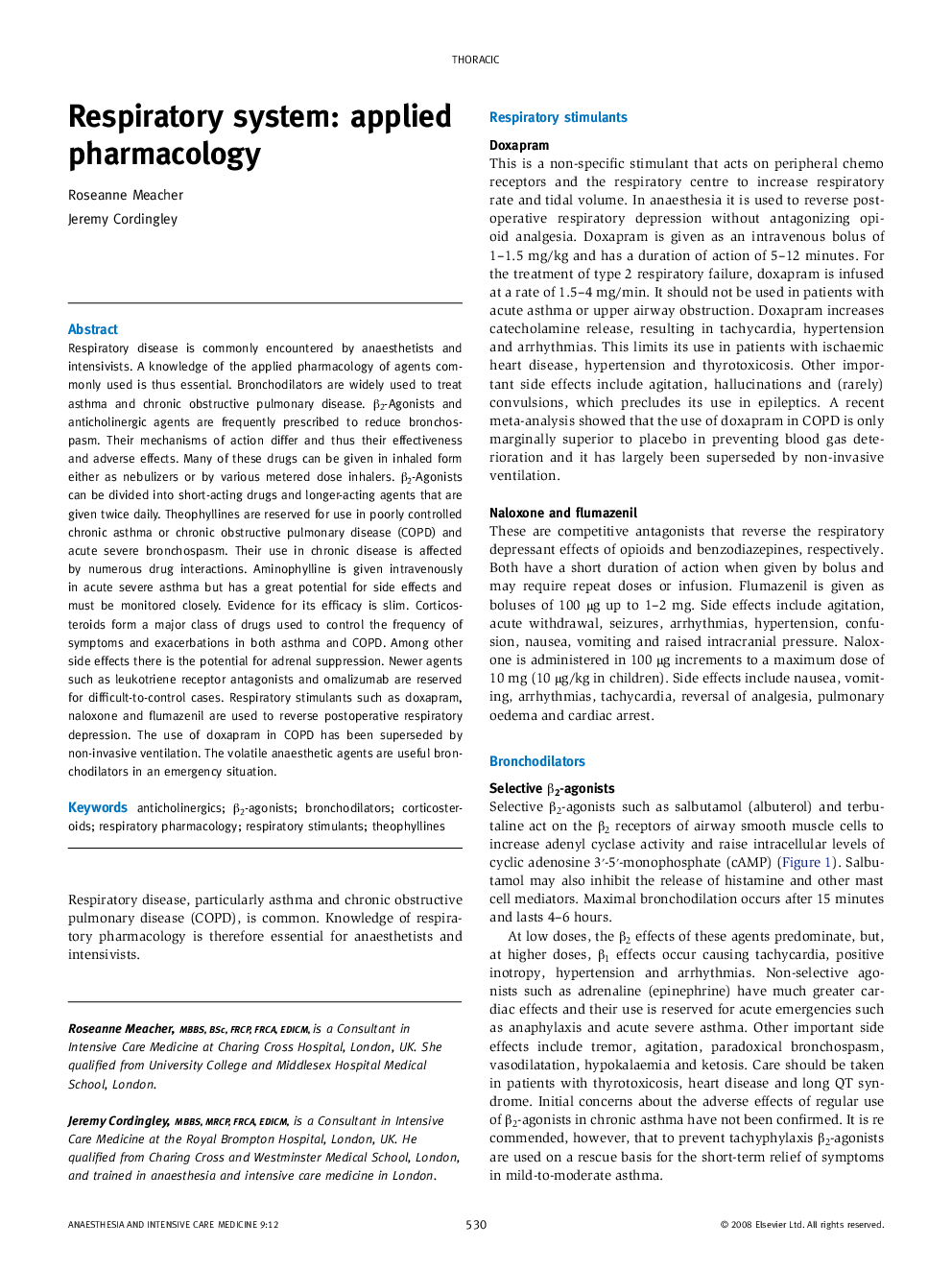| Article ID | Journal | Published Year | Pages | File Type |
|---|---|---|---|---|
| 2743389 | Anaesthesia & Intensive Care Medicine | 2008 | 4 Pages |
Respiratory disease is commonly encountered by anaesthetists and intensivists. A knowledge of the applied pharmacology of agents commonly used is thus essential. Bronchodilators are widely used to treat asthma and chronic obstructive pulmonary disease. β2-Agonists and anticholinergic agents are frequently prescribed to reduce bronchospasm. Their mechanisms of action differ and thus their effectiveness and adverse effects. Many of these drugs can be given in inhaled form either as nebulizers or by various metered dose inhalers. β2-Agonists can be divided into short-acting drugs and longer-acting agents that are given twice daily. Theophyllines are reserved for use in poorly controlled chronic asthma or chronic obstructive pulmonary disease (COPD) and acute severe bronchospasm. Their use in chronic disease is affected by numerous drug interactions. Aminophylline is given intravenously in acute severe asthma but has a great potential for side effects and must be monitored closely. Evidence for its efficacy is slim. Corticosteroids form a major class of drugs used to control the frequency of symptoms and exacerbations in both asthma and COPD. Among other side effects there is the potential for adrenal suppression. Newer agents such as leukotriene receptor antagonists and omalizumab are reserved for difficult-to-control cases. Respiratory stimulants such as doxapram, naloxone and flumazenil are used to reverse postoperative respiratory depression. The use of doxapram in COPD has been superseded by non-invasive ventilation. The volatile anaesthetic agents are useful bronchodilators in an emergency situation.
